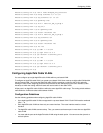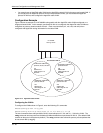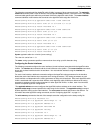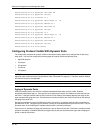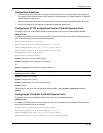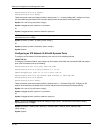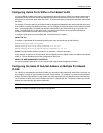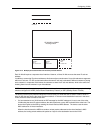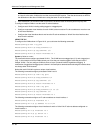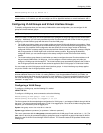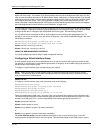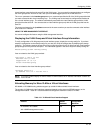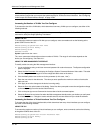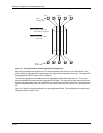
Configuring VLANs
VLAN 2
VLAN 3
VLAN 4
HP 9304M or 9308M
Routing Switch
VLAN 2
VE 1
-IP 10.0.0.1/24
VLAN 3
VE 2
-Follow VE 1
VLAN 4
VE 3
-Follow VE 1
Figure 16.15 Multiple port-based VLANs with the same protocol address
Each VLAN still requires a separate virtual interface. However, all three VLANs now use the same IP sub-net
address.
In addition to conserving IP sub-net addresses, this feature allows containment of Layer 2 broadcasts to segments
within an IP sub-net. For ISP environments where the same IP sub-net is allocated to different customers, placing
each customer in a separate VLAN allows all customers to share the IP sub-net address, while at the same time
isolating them from one another’s Layer 2 broadcasts.
NOTE: You can provide redundancy to an IP sub-net address that contains multiple VLANs using a pair of routing
switches configured for VRRP (Virtual Router Redundancy Protocol) or SRP (Standby Router Protocol).
The device performs proxy Address Resolution Protocol (ARP) for hosts that want to send IP traffic to hosts in
other VLANs that are sharing the same IP sub-net address. If the source and destination hosts are in the same
VLAN, the device does not need to use ARP.
• If a host attached to one VLAN sends an ARP message for the MAC address of a host in one of the other
VLANs using the same IP sub-net address, the device performs a proxy ARP on behalf of the other host. The
device then replies to the ARP by sending the virtual interface MAC address. The device uses the same
MAC address for all virtual interfaces.
When the host that sent the ARP then sends a unicast packet addressed to the virtual interface’s MAC
address, the routing switch switches the packet on Layer 3 to the destination host on the VLAN.
16 - 37



